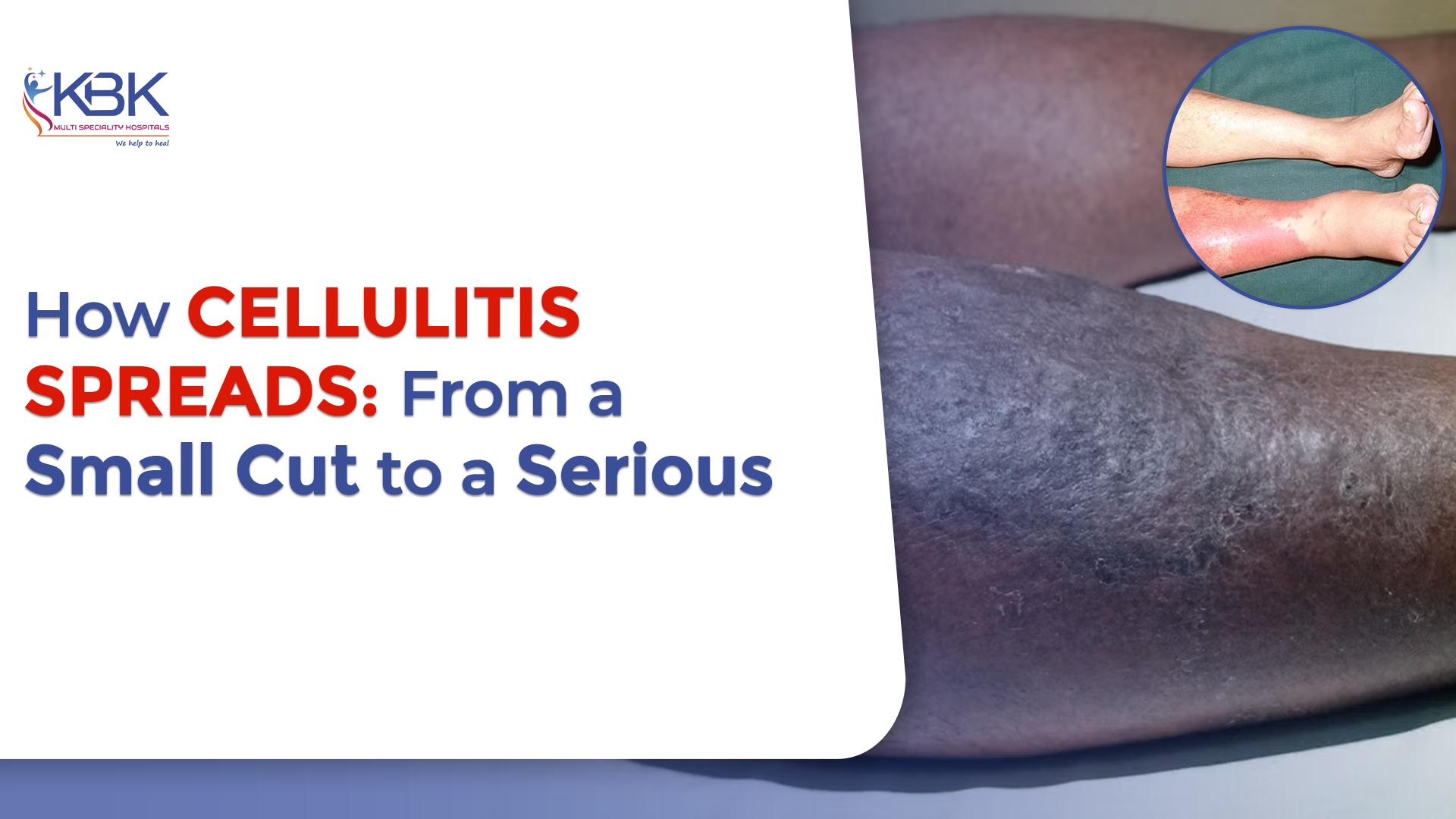Cellulitis is a common yet potentially serious bacterial skin infection that starts as a small, harmless cut but can quickly turn into a severe condition if left untreated. Many people underestimate its risks, assuming it’s just redness or irritation on the skin. However, cellulitis can spread fast and affect deeper layers of the skin and tissues, sometimes leading to dangerous complications.
In this blog, we’ll explain how cellulitis develops, spreads, and becomes serious, along with prevention tips, symptoms, and treatment options.
Understanding What Cellulitis Is
Cellulitis is a bacterial infection of the skin and underlying tissues. It usually occurs when bacteria enter through a break, cut, or wound in the skin. The most common bacteria responsible are Streptococcus and Staphylococcus, including MRSA in some cases.
The infection typically affects the lower legs but can occur anywhere on the body, including the arms, face, and feet.
How Cellulitis Starts?
Cellulitis often begins with a minor skin injury such as:
- A small cut or scrape
- An insect bite
- Dry, cracked skin
- A surgical wound
- Athlete’s foot or fungal infection
Once bacteria enter the broken skin, they multiply rapidly, causing inflammation, redness, and swelling in the affected area.
How Cellulitis Spreads in the Body?
When untreated, cellulitis infection spreads quickly through the skin and into the deeper layers of tissue. The infection may:
- Extend to the lymph nodes or bloodstream, leading to sepsis
- Affect nearby muscles or fascia (connective tissue)
- Cause abscess formation if pus collects under the skin
The speed of spread depends on your immune system, the type of bacteria, and how early the condition is detected.
Early Signs and Symptoms of Cellulitis
Recognizing cellulitis infection early is key to preventing complications. Some of the common symptoms include:
- Red, swollen area on the skin that feels warm or tender
- Pain or sensitivity in the infected region
- Fever and chills
- Skin dimpling or blistering
- Fatigue or body aches
If you notice redness that keeps spreading, especially with fever or severe pain, it’s important to seek medical help immediately.
Who Is at Risk of Developing Cellulitis?
Certain individuals are more vulnerable to cellulitis, especially those with:
- Diabetes (due to slow healing and poor circulation)
- Weakened immune system
- Skin conditions like eczema or athlete’s foot
- Poor blood circulation or lymphedema
- Obesity or chronic wounds
People with diabetic foot ulcers or open wounds should be particularly cautious, as these are common entry points for infection.
How to Prevent Cellulitis?
Preventing cellulitis involves proper skin care and hygiene. Here’s how you can lower your risk:
- Keep your skin clean and moisturized to avoid cracks.
- Treat cuts and wounds immediately with antiseptic and clean bandages.
- Avoid walking barefoot, especially outdoors.
- Manage chronic conditions like diabetes carefully.
- Do not scratch bug bites or rashes.
For those prone to recurrent cellulitis, preventive antibiotics may sometimes be recommended by doctors.
How Is Cellulitis Diagnosed?
Doctors diagnose cellulitis based on physical examination and medical history. They look for redness, swelling, and tenderness in the affected area.
In severe cases, additional tests such as blood tests, ultrasound, or wound cultures may be done to identify the bacteria and check if the infection has spread.
Treatment for Cellulitis
The treatment depends on the severity of the infection. In most cases, antibiotics are prescribed to stop bacterial growth. Mild cases can be treated at home, while severe infections may need hospitalization.
Treatment usually includes:
- Oral antibiotics for mild infections
- Intravenous antibiotics for severe cellulitis
- Pain relief and anti-inflammatory medication
- Proper wound care and hygiene
With early treatment, most cellulitis cases resolve within 7–10 days.
When Cellulitis Becomes Serious?
If left untreated, cellulitis can turn into a life-threatening infection. Complications may include:
- Abscess formation
- Blood infection (sepsis)
- Lymphangitis (infection of lymph vessels)
- Permanent tissue damage
That’s why prompt medical attention is vital when you notice any spreading redness, severe pain, or fever.
Living With and Managing Recurrent Cellulitis
Some people experience recurrent cellulitis due to chronic conditions like diabetes or poor circulation. In such cases:
- Regular skin checks and wound monitoring are essential.
- Keep your feet and legs clean, dry, and moisturized.
- Address fungal infections early.
- Wear comfortable shoes and avoid tight clothing.
Good blood sugar control and skin care can significantly reduce recurrence risks.
Conclusion
Cellulitis may begin as a small, harmless cut but can rapidly progress into a serious infection if ignored. By understanding how it spreads and taking preventive measures, you can protect yourself from severe complications.
Always remember: early detection and timely treatment are the keys to recovery. Keep your skin healthy, manage chronic conditions, and never ignore persistent redness or swelling.
FAQs
1. What causes cellulitis?
Cellulitis is mainly caused by bacteria like Streptococcus or Staphylococcus entering through a cut, wound, or insect bite in the skin.
2. Can cellulitis spread from person to person?
No, cellulitis is not contagious. It cannot spread directly through skin contact, but the bacteria that cause it can spread if proper hygiene is not maintained.
3. What are the warning signs that cellulitis is getting worse?
Increasing redness, severe pain, swelling, pus, fever, and chills are signs that the infection is spreading and needs immediate medical care.
4. Who is most at risk for cellulitis?
People with diabetes, weak immune systems, poor circulation, or skin conditions like eczema are at higher risk of developing cellulitis.
5. Can cellulitis come back after treatment?
Yes, cellulitis can recur, especially if the underlying cause like diabetes, cracked skin, or fungal infection is not managed properly.



